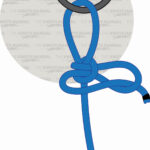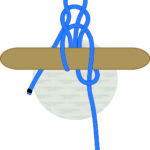The Slipped Buntline Hitch creates a simple quick-release hitch with a moderate amount of strength. It’s tied like a regular Buntline Hitch, except the working end is folded in half in the last step to create a quick-release bight.
Quick Guide: Tying a Slipped Buntline Hitch
To tie a Slipped Buntline Hitch, free up a 20-inch (50 cm) section near the end of the rope. Then wrap it around the support to reach the starting position.
Pass the working end over the standing end and then do one full turn around both top strands (step 1). Create a small bight near the end of the rope. Then pass it through the middle opening (step 2) to form the main structure of the Slipped Buntline Hitch (step 3).
Tighten the Slipped Buntline Hitch by pulling the bight while holding the top loop with your free hand. You can pull it closer to the support only once you tighten the knot first.
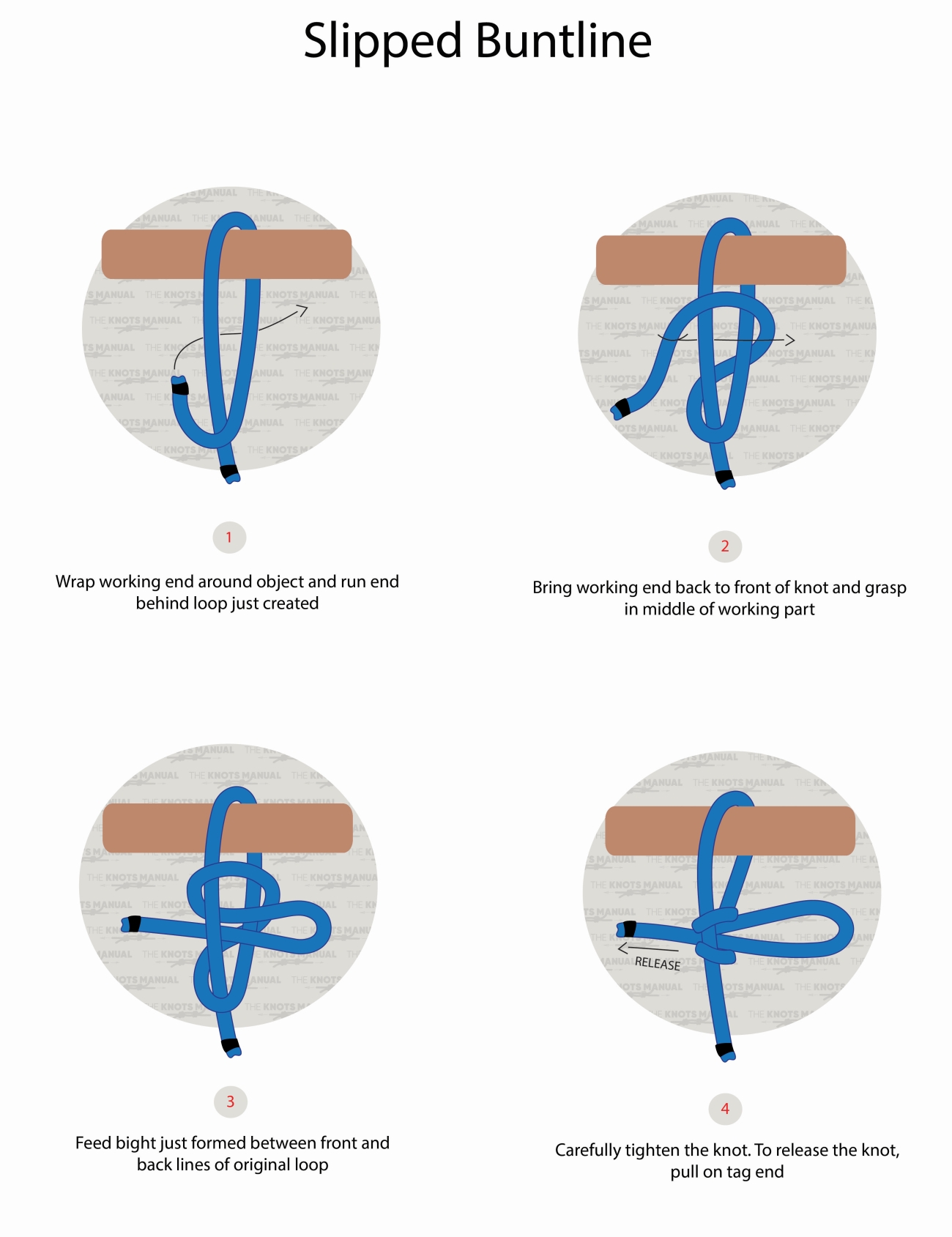
Pros and Cons of the Slipped Buntline Hitch
The Slipped Buntline Hitch is very easy to tie if you already know how to tie the regular Buntline Hitch. It can be tied very quickly once you get the hang of it.
It’s also a somewhat secure slipped hitch. For most general applications, the Buntline Hitch will be reliable enough. But like any quick-release hitch, it should never be used for critical applications, like climbing.
Another advantage of the Slipped Buntline Hitch is that you can untie it in seconds by pulling the working end.
One downside is that it can be difficult to tighten. You have to hold the top loop secure while pulling the bight with your other hand. To tighten it correctly, you should also push the knot inwards from both sides so that there’s less leeway and it’s less likely to come undone.
Common Uses for the Slipped Buntline Hitch
If you know how to tie a regular Buntline Hitch, then you don’t need to learn other quick-release hitches. It’s strong enough for most applications and it can be tied quickly.
The Slipped Buntline Hitch can be used in any situation where a quick-release hitch is beneficial. Some applications could be tying animals to posts or fences or attaching tarp ridgelines to trees and branches.
Knots Like the Slipped Buntline Hitch
Tumble Hitch: Considered to be the most secure quick-release hitch. Once learned, it can also be tied quickly. It’s even more secure than the Slipped Buntline Hitch, but it still shouldn’t be used for critical applications.
Highwayman’s Hitch: A similarly strong quick-release hitch to the Slipped Buntline Hitch. It’s a bit more difficult to tie, making it inferior to the Slipped Buntline Hitch.
Mooring Hitch: A very common quick-release hitch for mooring a boat. It isn’t as secure as the Slipped Buntline Hitch.
Slipped Taut Line Hitch: A quick-release slide-and-grip knot. It grips very well and slides easily if it isn’t under tension. This allows you to tension ropes. It’s tied like a regular Taut Line Hitch, only with a bight to create a quick-release function.
Farrimond Friction Hitch: A new friction hitch that’s used commonly by survivalists to attach tarp ridgelines to trees. It allows you to adjust the tension of the guyline if needed.
Step-by-Step Guide: How to Tie a Slipped Buntline Hitch
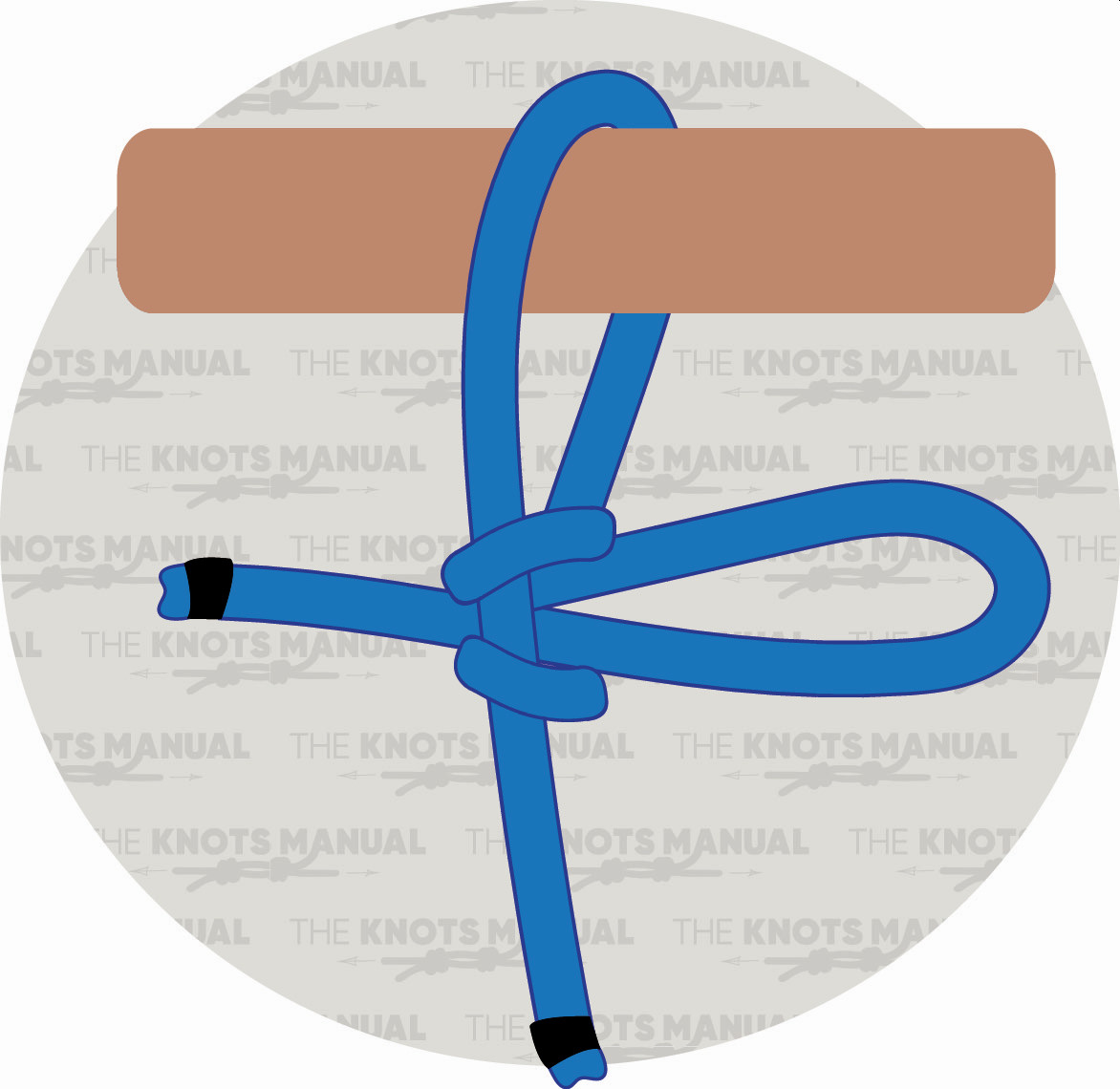
A step-by-step guide on how to tie a Slipped Buntline Hitch.
Step 1:
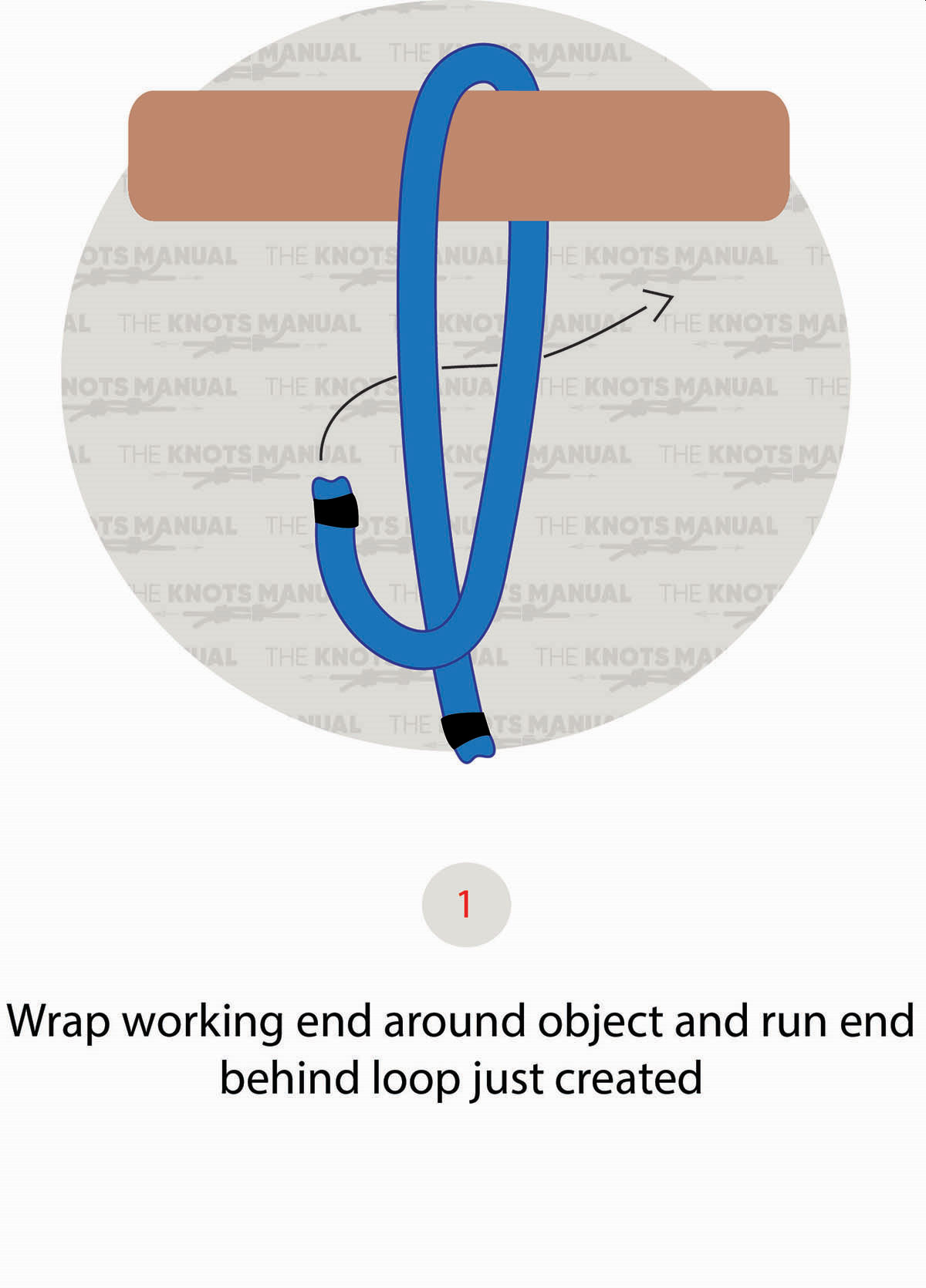
Pass the working end around the object and then around the standing end and itself.
Step 2:
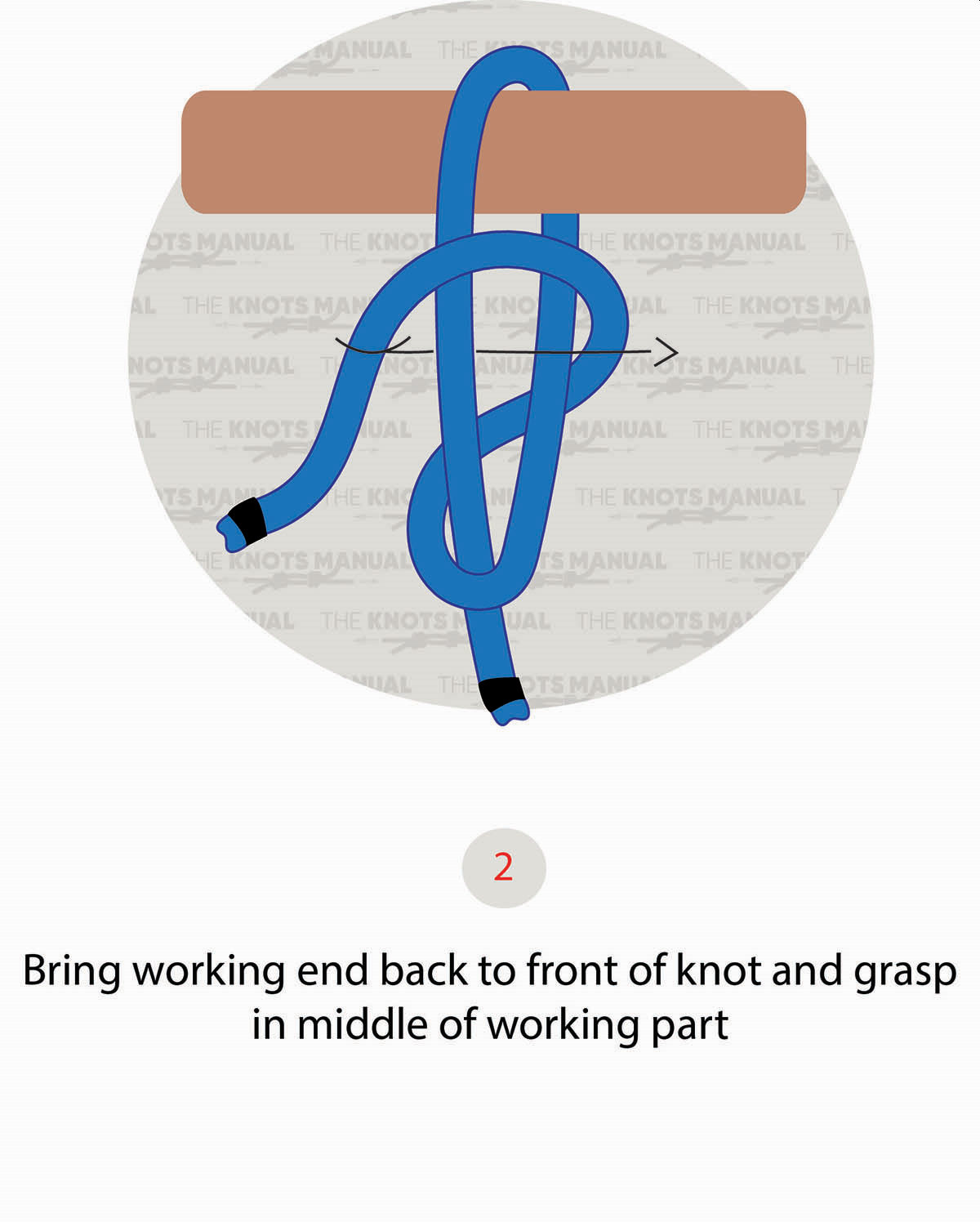
Form a bight near the working end and then pass it behind the standing end and over the right strand.
Step 3:
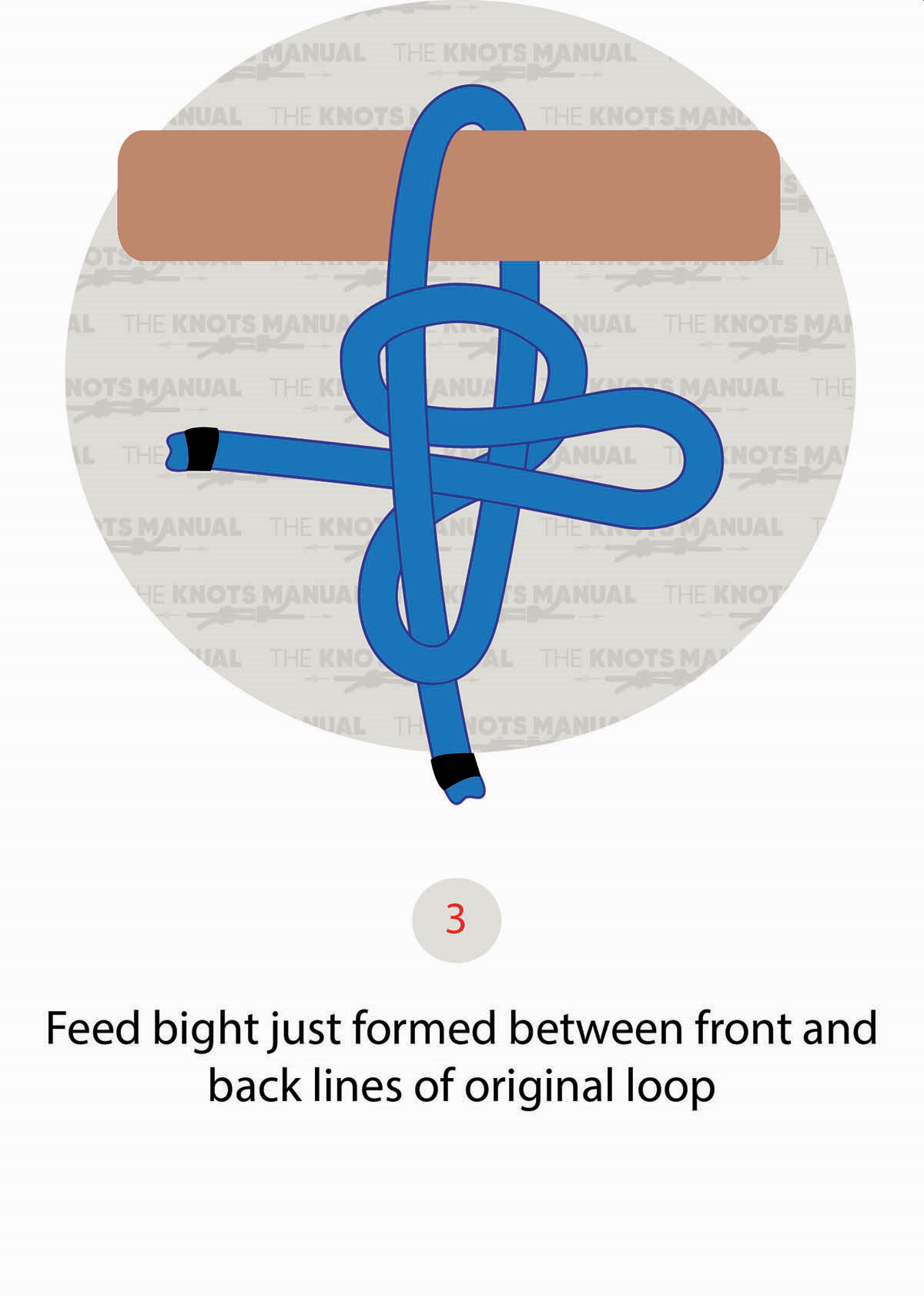
You should now have a knot like the one illustrated above. Tighten it by pulling the bight with one hand and the right side of the top loop with your other hand.
Step 4:
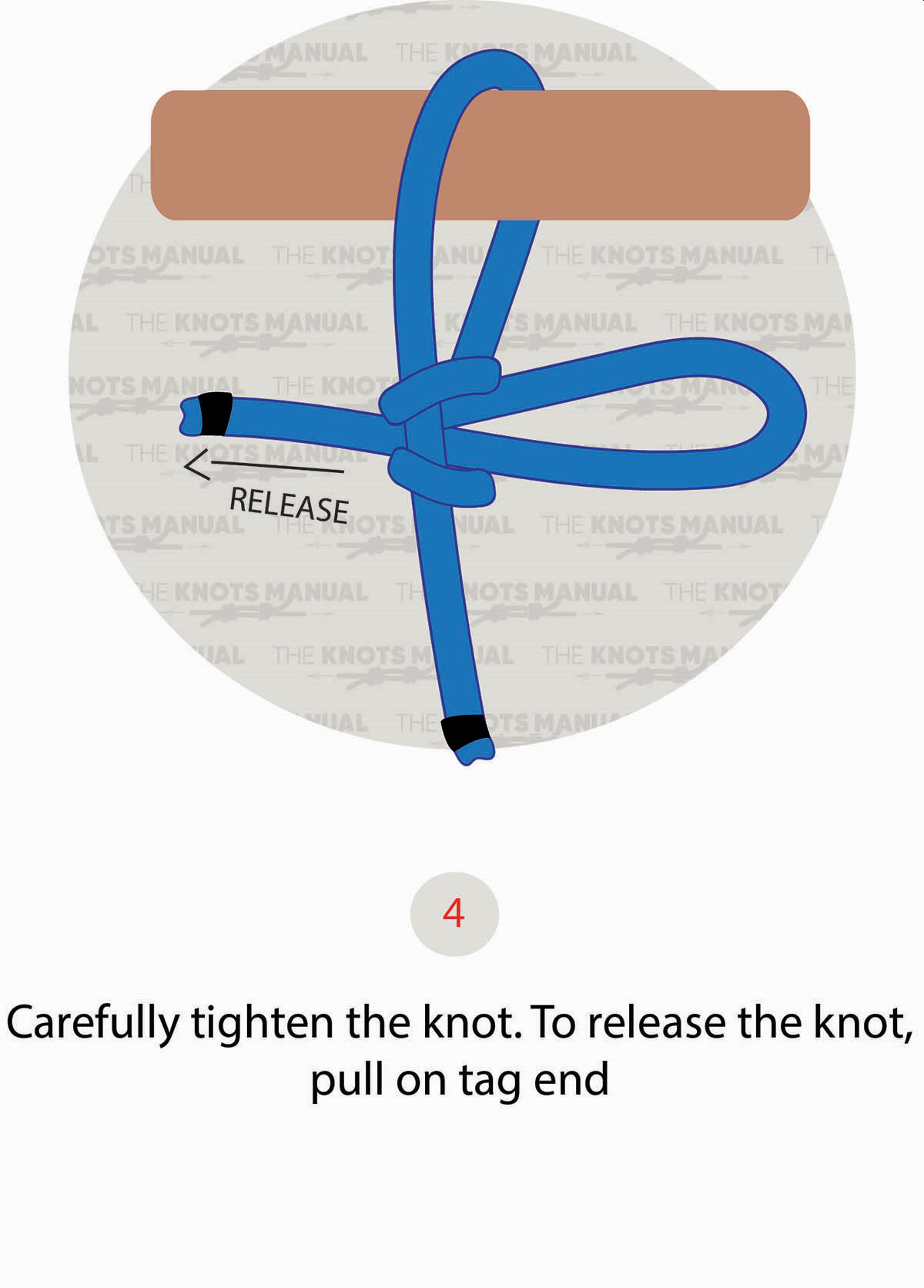
You can untie the Slipped Buntline Hitch by pulling the working end.

